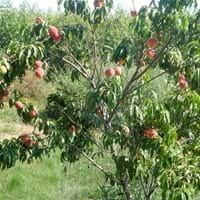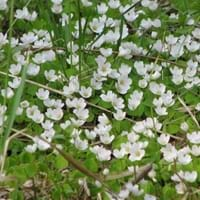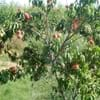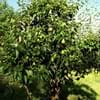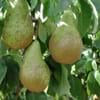Life Span
Perennial
Perennial
Origin
China
World, Pandemic, North America, Europe, United Kingdom, Asia
Types
Tuscany, Royal Gem, Flavortop, Crimson Baby, Fantasia
Not available
Number of Varieties
Not Available
Habitat
Warmer regions
Shaded sites, Woodlands
USDA Hardiness Zone
5-9
3-8
Sunset Zone
H1, 1a, 1b, 2a, 2b, 3a, 3b, 6, 7, 8, 9, 10, 11, 12, 13, 14, 15, 16, 18, 19, 20, 21, 22, 23, 24
A3, 1a, 1b, 2a, 2b, 3a, 3b, 4, 5, 6, 7, 8, 9, 10, 14, 15, 16, 17, 18, 19, 20, 21, 22, 23, 24
Habit
Oval or Rounded
Mat-forming
Flower Color
White, Red, Light Pink, Rose
White, Light Pink
Flower Color Modifier
Bicolor
Bicolor
Fruit Color
White, Yellow, Red, Pink, Peach
Not Available
Leaf Color in Spring
Green
Light Green
Leaf Color in Summer
Green
Light Green
Leaf Color in Fall
Green
Light Green
Leaf Color in Winter
Light Green
Light Green
Leaf Shape
Long, simple, curved and folded
Heart-shaped
Plant Season
Spring
Spring, Summer, Fall
Sunlight
Full Sun
Partial Sun, Partial shade, Full Shade
Type of Soil
Loam, Sand
Clay, Loam, Sand
The pH of Soil
Acidic, Neutral
Neutral
Soil Drainage
Well drained
Average
Tolerances
Drought
Shade areas
Where to Plant?
Ground
Ground
How to Plant?
Budding, Grafting, Seedlings
Divison, Seedlings
Plant Maintenance
Medium
Low
Watering Requirements
Average Water Needs, Requires regular watering
Water in the early morning hours
In Summer
Lots of watering
Lots of watering
In Spring
Moderate
Moderate
In Winter
Average Water
Average Water
Soil pH
Acidic, Neutral
Neutral
Soil Type
Loam, Sand
Clay, Loam, Sand
Soil Drainage Capacity
Well drained
Average
Sun Exposure
Full Sun
Partial Sun, Partial shade, Full Shade
Pruning
Remove damaged leaves, Remove dead branches, Remove dead leaves
Remove damaged leaves, Remove dead branches, Remove dead flowers, Remove dead leaves
Fertilizers
All-Purpose Liquid Fertilizer
All-Purpose Liquid Fertilizer
Pests and Diseases
Red blotch
Aphids, Root rot, Whiteflies
Plant Tolerance
Drought
Shade areas
Flower Petal Number
Single
Single
Fragrant Flower
Insignificant
No
Foliage Texture
Medium
Medium
Foliage Sheen
Glossy
Matte
Attracts
Bees, Hummingbirds, Insects
Insects
Allergy
Anaphylaxis, Asthma, Bronchial-constrictions, Food Allergy, Urticaria
Asthma, Depression
Aesthetic Uses
Beautification
Not Used For Aesthetic Purpose
Beauty Benefits
Good for skin, Making cosmetics
Good for skin, Not Available
Environmental Uses
Air purification
Air purification
Medicinal Uses
Aphrodisiac, Blood stasis and neurodegenerative diseases, Cancer, cholesterol-lowering, Combats Stress, Culinary Usage, Diuretic, Hair Loss, Hypokalemia, Obesity, Skin Disorders, Stomach pain, Weight loss
Digestive, Eye Problems, Vitamin A, Vitamin C
Part of Plant Used
Bark, Flowers, Leaves, Seeds
Flowers, Leaves
Other Uses
For making oil, Gum, Used as a dye, Used as Ornamental plant
Cleanser
Used As Indoor Plant
No
No
Used As Outdoor Plant
Yes
Yes
Garden Design
Container, Fruit / Fruit Tree, Topiary / Bonsai / Espalier
Container, Mixed Border, Wildflower
Botanical Name
PRUNUS persica nectarine
OXALIS acetosella
Common Name
Nectarine, Hardy Red
wood sorrel, common wood sorrel
In Hindi
आड़ू
Wood Sorrel
In German
Dwarf Nectarine
Sauerklee
In French
Dwarf Nectarine
bois Sorrel
In Spanish
Dwarf Nectarine
alazán de madera
In Greek
Dwarf Nectarine
ξύλο Sorrel
In Portuguese
Dwarf Nectarine
Sorrel de madeira
In Polish
Dwarf Nectarine
Drewno szczaw
In Latin
Hardy Red
Rumex ligno
Phylum
Magnoliophyta
Magnoliophyta
Class
Magnoliopsida
Magnoliopsida
Family
Rosaceae
Oxalidaceae
Clade
Angiosperms, Eudicots, Rosids
Angiosperms, Eudicots, Rosids
Tribe
Not Available
Not Available
Subfamily
Not Available
Not Available
Number of Species
Not Available
Season and Care of Dwarf Nectarine and Wood Sorrel
Season and care of Dwarf Nectarine and Wood Sorrel is important to know. While considering everything about Dwarf Nectarine and Wood Sorrel Care, growing season is an essential factor. Dwarf Nectarine season is Spring and Wood Sorrel season is Spring. The type of soil for Dwarf Nectarine is Loam, Sand and for Wood Sorrel is Clay, Loam, Sand while the PH of soil for Dwarf Nectarine is Acidic, Neutral and for Wood Sorrel is Neutral.
Dwarf Nectarine and Wood Sorrel Physical Information
Dwarf Nectarine and Wood Sorrel physical information is very important for comparison. Dwarf Nectarine height is 150.00 cm and width 150.00 cm whereas Wood Sorrel height is 5.10 cm and width 30.00 cm. The color specification of Dwarf Nectarine and Wood Sorrel are as follows:
Dwarf Nectarine flower color: White, Red, Light Pink and Rose
Dwarf Nectarine leaf color: Green
Wood Sorrel flower color: White and Light Pink
- Wood Sorrel leaf color: Light Green
Care of Dwarf Nectarine and Wood Sorrel
Care of Dwarf Nectarine and Wood Sorrel include pruning, fertilizers, watering etc. Dwarf Nectarine pruning is done Remove damaged leaves, Remove dead branches and Remove dead leaves and Wood Sorrel pruning is done Remove damaged leaves, Remove dead branches, Remove dead flowers and Remove dead leaves. In summer Dwarf Nectarine needs Lots of watering and in winter, it needs Average Water. Whereas, in summer Wood Sorrel needs Lots of watering and in winter, it needs Average Water.
